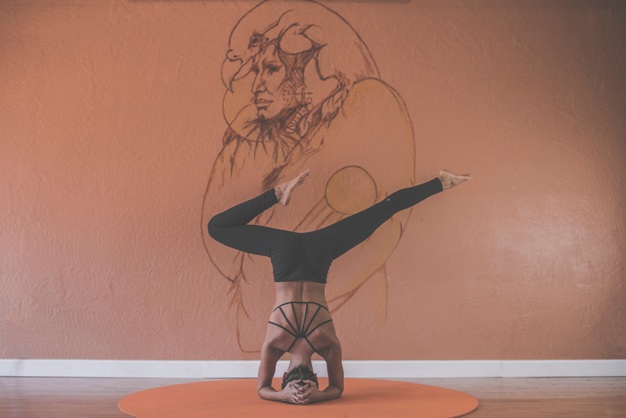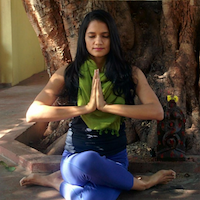“Are you breathing?”
As the question resonated throughout the yoga shala in Mysore, I realized I had never before stopped to notice if I was breathing at all.
Even though we’re participating in this act every moment of our lives, we are hardly aware or in control of it.
It’s been said that each one of us is born with a fixed number of breaths, implying that the slower we breathe, the longer we live.
With an average breathing rate of 15 times a minute, the average human life span is 80 years. The tortoise breathes about four times a minute and can live for over 150 years, while dogs, who have a breathing rate of up to 35 times per minute, can only live for about 10.
A more recent version of this concept can be found in the Rate of Living Theory by Max Rubner, which states that the faster the metabolism of an organism, the shorter its lifespan will be. Or conversely, the slower we use up our energy, the longer it will last.
While breathing is an evolutionarily intuitive force, most of us have lost touch with it due to our modern lifestyles. Poor breathing is as much a result of bad posture as it is of our environment, emotions and food. We don’t really breathe to full capacity anymore or recruit the correct muscles needed for proper breathing, using only about one-tenth of our total lung capacity.
And when our breath is disturbed, so is our mind.
By breathing correctly, we can improve our physical and emotional well-being, and, using more advanced technique, we can use our breath to tap into our subconscious.
All we need to do first is get back to basics and re-learn how to breathe.
The first step is simply to become mindful of the breath. When we breathe habitually without attention, the primitive brain is active, resulting in minimal awareness. As soon as we bring our focus to the breath however, the frontal part of the brain starts operating. This gives us greater emotional control and improved concentration, which is helpful when pursuing meditative practices.
Setting an intention also helps to slow down our breathing rate, allowing us to take long deep breaths that give the body sufficient time to assimilate oxygen.
Second, we need to become aware of how we’re breathing. There are three ways to breathe. The first is abdominal breathing, which happens when we push the diaphragm down, raising the belly up. Second is thoracic breathing, which is when we expand the rib cage and breathe through the chest or thoracic region. Last is clavicular breathing, in which we raise our collarbones to fill the uppermost lobes of our lungs with air.
Abdominal breathing is considered more efficient, as it provides the most even distribution of air. It also puts less strain on the heart as it’s supported by gravity. Put together in sequence, these three become the Full Yogic Breath; nevertheless, correct abdominal breathing is sufficient in our daily life.
Third, we need to remember to breathe through the nose and not the mouth. The nasal passage helps to warm, moisturize and filter the air. It also contains a large number of nerve fibers, which influence the involuntary activities of our body like digestion, heartbeat, and even respiration itself. If we don’t breathe through the nose, we don’t activate these nerve fibers.
There is also better assimilation of oxygen from breathing through the nose due to the presence of nitric oxide that exists exclusively in our sinuses. This cannot be achieved by breathing through the mouth. In fact, as per a 2002 study, humming (bhramari pranayama) resulted in a 15-fold increase in nitric oxide as compared to quiet exhalation.
Swara yoga is one of the subtle sciences that highlights the biorhythm of the breath as it alternates between the right and left nostril throughout the day. Usually the switch happens every 90 minutes. When breath flows equally through both nostrils, it activates our pranic energy, and every system in the body then works at optimum capacity.
All yogic practices help us equalize this alternating flow of breath, but let’s talk more about pranayama. In pranayama, this is achieved by maintaining specific patterns of inhalation, exhalation and retention. While it is called the “science of breath,” it literally translates into control (yama) of the cosmic energy (prana).
As per Swami Gitananda, “pra” stands for that which existed before and “ana” means an atom. Therefore, he says, prana stands for “that which existed before any atomic or cellular life came into being.” It is that source of universal energy from which everything in the universe has been created.
In India, when a person dies, people say he has “lost his prana.” Loss of prana is compared to loss of life, as prana depletes at an accelerated pace if we succumb to fear, anger, unhealthy food, or a bad environment. Physically, it can be generated through consuming the right foods, drinking water, being exposed to the sun and breathing pure air—the most potent way. Hence, prana is the subtle energy or vital force created by the physical act of breathing.
Pranayama is a way to control this energy.
There are three things we must appreciate before starting pranayama practices: the wisdom to start under the guidance of a teacher, the willpower to sit still in one asana (Hatha yoga helps here) and the patience to follow the instructions.
It wasn’t until my Hatha yoga training that I learned how to honor the breath with the right methods. We practiced breathing until we mastered it in all the ways that the body could move, and then we finally learned to be still. Over a period of time, there were changes in my habits, food choices, thoughts and overall energy levels, but there were also episodes that seemed nothing short of a healing crisis.
That’s why I reiterate: Pranayama practices should never be done without proper guidance from a guru. Once you start working with the breath, there are far-reaching changes not necessarily limited to the physical. But with guidance, you can get through this practice safely and learn to channel the energy correctly.
A simple and easy way to work with breath is by chanting “aum” and trying to extend the breath a little bit more everyday without force until we can make it deeper and longer. In fact, Gayatri mantra is said to create the most ideal breathing pattern when chanted correctly.
But always remember there’s more benefit in getting the basics right than prematurely moving to advanced stages.
At the very least, breath is the source of all life; at most, it can be our spiritual guide. Simply by understanding the details of inhalation and exhalation, we can experience its influence on our bodies as well as our minds.
Taking a few minutes to center ourselves daily and reconnect with the breath will retrain our body to breathe correctly even when we are too busy to notice. And by practicing yoga on top of this, we can learn to harness the energy of the breath and experience its true powers.
After all, the only pertinent question of life is, are you breathing?
Author: Namita Chandra
Image: Unsplash
Editor: Callie Rushton







Read 0 comments and reply